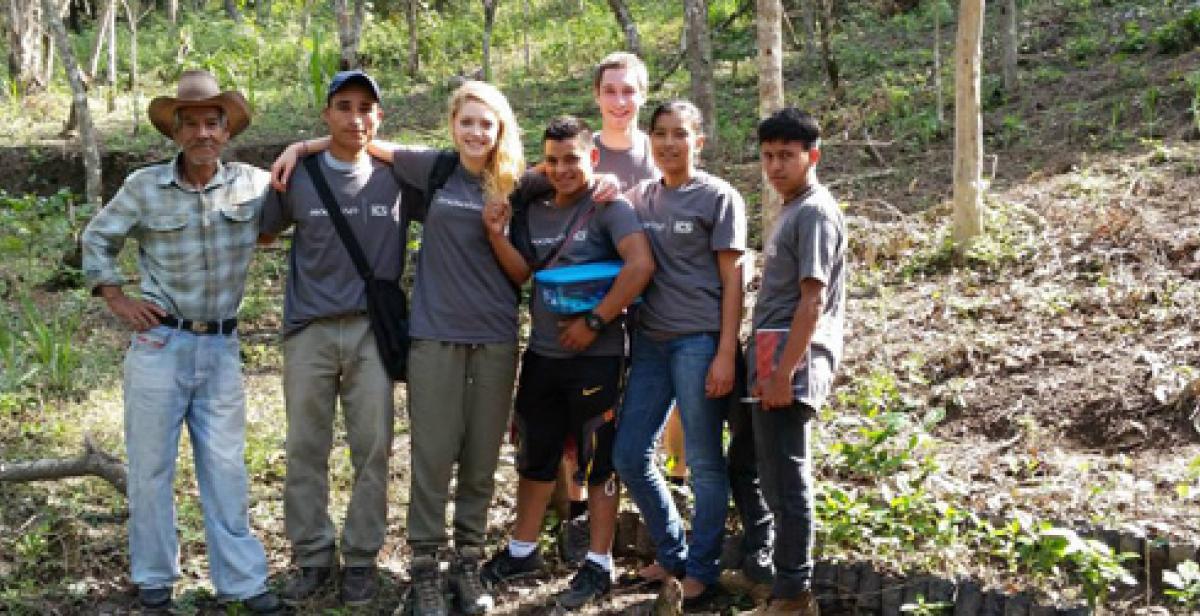During our “prioximo semana” (first week), Progressio introduced us to the programmes we would be participating in whilst in Honduras. Meeting Red COMAL our partner organisation, whom we are supporting, we got shown a video displaying the effects of climate change in Honduras and why the work we will be doing in Lempira, Western Honduras is so important.
To those that do not know, Honduras is a country in the Central America region. A country with an array of undiscovered flora and fauna, wildlife-rich jungles and breath-taking mountainous landscapes, expanding the entire breadth of a humans crystallised lens. Vision in other words. Its heritage embellishes a multi-ethnic history, its derivative, the Mayan Civilisation and mother tongue Española. However, located between the Atlantic and Pacific Ocean, it’s positioning on the Global Climate Risk Index 2015 is three, surpassing only Burma and Haiti according to Germanwatch.
The Global Climate Risk Index, depicts “those who suffer most from extreme weather events and those regions whom will be most vulnerable to the effects of climate change”.
Vulnerability is assessed relative to a countries exposure to climate change, degree of sensitivity to climate change in terms of livelihoods and ecosystems and ability to adapt, predict, withstand and respond to climate change.
So why is Honduras most vulnerable to the effects of climate change?
Honduras’ geo-climatic location lends itself to be affected by numerous extreme weather events; susceptible to tropical storms, flooding, landslides and droughts as a result of the natural phenomena El Niño - temperatures are predicted to be 2 degrees higher within this region by 2050. Temperatures already high above baseline average for the last 15 years, El Niño years can cause temperatures to increase further by between 0.75- 1.0 C. Vulnerability is intensified by a correlated 10-20% predicted reduction in precipitation. This reduction in precipitation alongside population growth and urbanization exacerbates water pressures. As a result a reduction in water availability in combination with increased temperatures and unstable climatic conditions the susceptibility of agriculture to be affected by disease and pest is increased.
This is a problem as Honduras’ main economic activity is agriculture, its main crops: coffee, maize and beans account for more than 60% of its GDP. In the Western regions, agriculture is very dependent on stable climatic conditions. Therefore a decrease in agriculture productivity has a direct impact on both national and local economies of Honduras. Specifically within the communities such as Lempira, the region we are working in, where 82.7% of livelihoods are based on agriculture. This subsequently increases households risk to food insecurity and malnutrition.
Here are some more facts for you:
• Coffee is the most important cash crop in Western Honduras; with 106,000 producers and approximately 272,000 hectares of coffee planted (Instituto Hondureño del Café [IHCAFE], 2014)
• Honduras is the third largest exporter of coffee in Latin America.
• Coffee production creates 1.2million, jobs employing 30% of the total population.
• Produced on predominantly small-scale farms, maize and beans are the two staple crops which provide household food security.
• Last summer, an intense drought saw harvest drop by 80% in some parts of Central America
• The price of maize and beans rose by 40%, forcing the government to declare a state of emergency
• Honduras is currently exhibiting a population growth of 2.2% per year.
• In the region of Lempira the average HDI (Human Development Index) is 0.587, the UK’s is 0.892.
• Western Honduras has a population of 1.7 million, 1 million of those are claimed to be living in extreme poverty.
What have we found out so far?
Through our interviews with local farmers this week, it is evident that the livelihoods of the communities we will be working in are being directly affected by climate change. During this past week we have conducted interviews with local farmers in the communities of La Azomana, El Zapote, Rancho Grande, El Tablon, Camolote Campuca and Los Altos Guanteque. The maize harvest, according to one farmer, has significantly reduced from 45 bags per manzana (equivalent to 1.68 acres) 5 years ago to 15 bags today. La Roya; a coffee disease, which totally wipes out harvests, spreads quickly across farms, damaging years’ worth of labour. In the rural communities we will be working in it has had a detrimental effect on the coffee productivity, with all the farmers stating it is big problem. In 2013 the disease La Roya caused Honduras an economic loss of $216 million.
We are the third cycle here in Gracias, Lemperia. Having already seen the benefits of the last two cycles work in the communities we hope to continue the sustainable positive work. Our intention is to increase the adaptive capacity of the rural communities to better respond and adapt to climate change. We will be;
• Encouraging the use of environmentally friendly farming methods such as organic fertilizers over chemical fertilizers
• Supporting the diversification of crops, such as avocados, mangos, cinnamon, coco and sugar cane.
• Educating the local communities about climate change, strengthening their technical capabilities in order to reduce poverty.
• Creating a litter campaign
• Recycle unused land to establish vegetable gardens.
Written by ICS volunteer Ceri Lloyd



